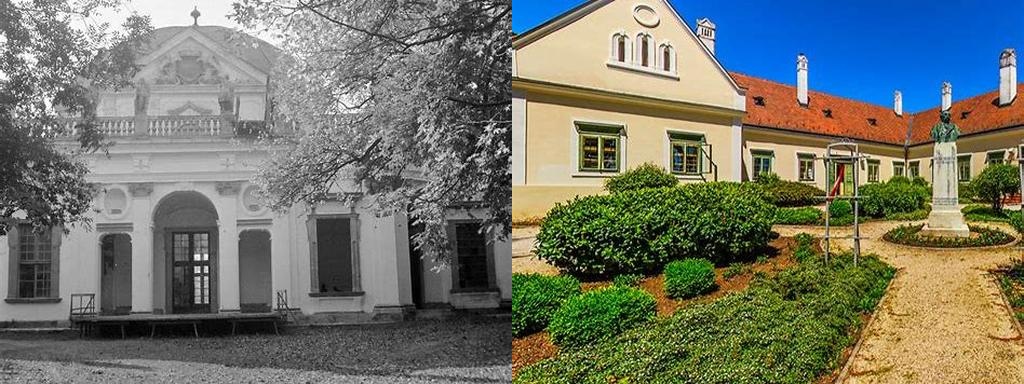
Ónod, nestled along the scenic banks of the Sajó River in northern Hungary, might be a small dot on the map, but it has a big claim to fame: it harbors one of the region’s most enchanting pieces of noble architecture. Standing quietly amid lush greenery and the gentle hum of village life, the Zákány-kúria—or Zákány Mansion—welcomes anyone keen on stepping into Hungary’s layered past without the hustle and fanfare of crowded city attractions.
Constructed in the late 18th century—sources suggest somewhere in the 1780s or early 1790s—the Zákány Mansion is not a castle to overawe, but rather a house to invite curiosity. It came into being thanks to the ambitions of the Zákány family, one of Ónod’s most significant noble families, who took residence in the area for generations. At first glance, the manor’s Neoclassical elegance mingles harmoniously with rural Hungarian restraint. Its elongated, single-story shape stretches across the park’s slightly wild lawns, painted in soft tones that have weathered gracefully in the Ónod air.
As you wander up the understated driveway toward the mansion, it’s easy to imagine the swirl of carriages and the clipped conversation of gentry in their Sunday finest. A portico, supported by sturdy columns, marks the entrance—a symbol not of pomp, but of enduring taste. Inside, much of the original layout remains, restored and preserved over careful decades. Old wooden floors, intricate ceiling murals, and period fireplaces hint at a world where every detail mattered, where even the mundane act of tea-drinking took on ceremonial importance.
What makes the Zákány-kúria uniquely special, beyond the elegance of its structure, is the sense of lived history you find in its rooms. Unlike the palaces of Budapest or the flamboyantly Baroque castles further west, the mansion has survived the centuries in a more human way—it’s modest, thoughtfully designed, and scaled for comfort instead of pageantry. When walking the hallways, you might catch your reflection in a centuries-old windowpane and wonder about the generations of Zákány children peering through at the changing seasons, or imagine the rustle of ball gowns echoing down the staircase.
History has not always been gentle with Ónod or its mansion. The 1848 Hungarian Revolution ricocheted through these lands, as it did in so much of the country, and the inhabitants of the manor watched the tides of reform and rebellion sweep past their doors. Later, a succession of owners carried the mansion into new eras—some bringing prosperity, others overseeing periods of abandonment and quiet decay. For a long time during the 20th century, like many Hungarian nobility’s houses, the mansion was repurposed under state ownership: it has served as a school, a library, even a center for community events. While these new chapters blurred some of its original grandeur, they also added unexpected layers of memory and meaning to the building.
Today, the Zákány-kúria stands as an accessible, lived-in historical site that appeals to those curious about the rhythms of rural Hungary. It’s not uncommon to find a casual exhibition of local art or history in its rooms, or to meet townsfolk eager to share stories about childhood afternoons spent on its grounds. The park surrounding the mansion is free to wander and, depending on the time of year, might be bursting with wildflowers or alive with the lazy buzz of summer bees. Far from being roped-off and aloof, the mansion garden constantly welcomes both locals and outsiders; in the shade of its ancient trees, picnics and casual conversations feel entirely at home.
One of the quieter joys awaiting visitors is simply slowing down in this landscape. Beyond the mansion’s doors, Ónod’s gentle pace invites long walks or bike rides along the riverbanks, or wading into the village for traditional Magyar fare at a nearby eatery. If you’re lucky, you might come across a local festival, when the stories behind the Zákány family come alive in song, dance, and costume—revealing how the life of the mansion is woven with the lives of everyone in Ónod.
All things considered, the Zákány Mansion doesn’t boast with golden ceilings or secret dungeons, nor does it flood your senses; rather, it quietly unfolds its stories for anyone ready to listen. It’s a place to find the spirit of Ónod in serene rooms, shadowed corridors, and the gentle laughter drifting across a timeworn veranda—and perhaps, for a lingering afternoon, to feel a part of that story too.





